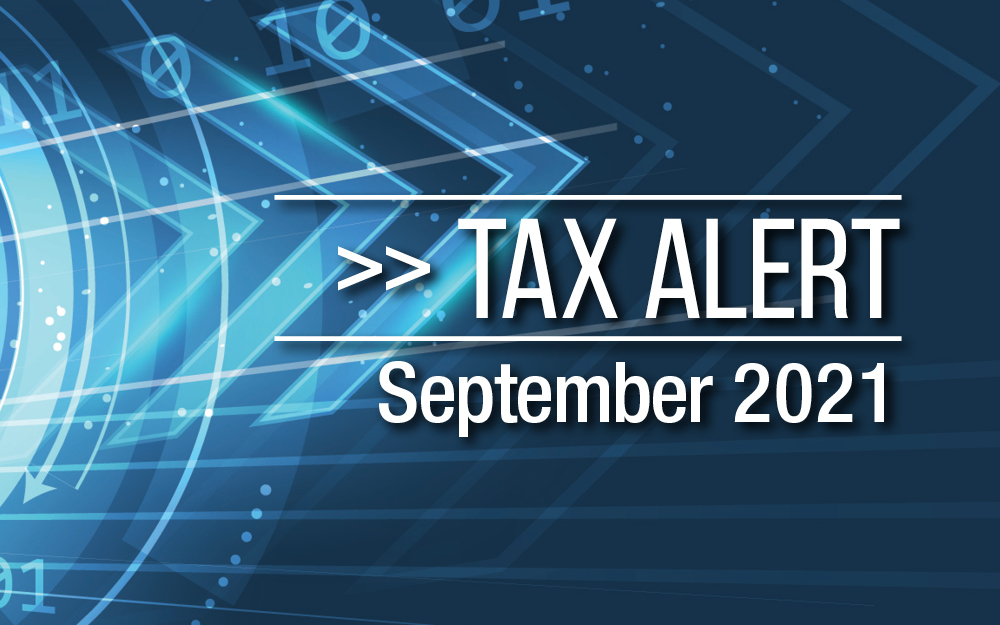
Spring 2021
It’s September and spring is here, providing a welcome lift in spirits. After some spectacular performances by our athletes at the recent Tokyo Olympics and Paralympics, hopefully you are inspired to achieve some personal goals of your own.
August provided mixed economic news, with central banks, business and consumers remaining cautious. In a widely-reported speech, US Federal Reserve chair, Jerome Powell said there remained “much ground to cover” before he would consider lifting interest rates, sending stocks higher and bond yields lower.
In Australia, shares and shareholders were boosted by a positive company reporting season. According to CommSec, of the ASX200 companies that have reported so far, 84% reported a profit in the year to June, 73% lifted profits and dividends were up 70% to $34 billion. One of the COVID “winners” is the construction sector. While the value of construction rose 0.4% overall in the year to June, the value of residential building was up 8.9% and renovations rose 24.5%, the strongest in 21 years. One of the COVID “losers”, retail trade was down 3.1% in the year to June.
While unemployment fell from 4.9% to 4.6% in July, full-time jobs and hours worked were lower due to the impact of lockdowns. The Westpac-Melbourne Institute index of consumer sentiment fell 4.4% in August while the NAB business confidence index fell 18.5 points in July, the second biggest monthly decline since the GFC. Wages grew 1.7% in the year to June, well below the 3% the Reserve Bank wants before it considers lifting interest rates.
Iron ore prices fell 18% in August, while the Aussie dollar finished the month weaker at US73.2c.

Aged care payment options
When it comes time to investigate residential aged care for yourself, your partner, parent or relative, the search for a facility and how to pay for it can seem daunting. The system is complex, and decisions are often made in the midst of a health crisis.
Factors such as location to family and friends, reputation for care or general appeal are just as important as the sometimes-high price of a room and other fees in residential aged care.
Even so, costs can’t be ignored.i
Accommodation charges
The first thing to be aware of when researching your residential aged care options is that there are separate costs for the accommodation and the care provided by the facility.
The accommodation payment essentially covers your right to occupy a room. You can pay this accommodation fee as a lump sum called the Refundable Accommodation Deposit (RAD), or a daily rate similar to rent, or combination of both.
The daily rate is known as the Daily Accommodation Payment or DAP and is effectively a daily interest rate set by the government. The current daily rate is 4.04 per cent. If the RAD is $550,000 then the equivalent DAP is $60.87 a day ($550,000 x 4.04%, divided by 365 days).
A resident can pay as much or as little towards the RAD as they choose, but any outstanding amount is charged as a DAP.
The RAD is fully refundable to the estate, unless it is used to pay any of the aged care costs such as the DAP.
Daily fees
As well as an accommodation cost there are daily resident fees that cover living and care costs. There is a basic daily fee which everyone pays and is set at 85 per cent of the basic single Age Pension. The current rate is $52.71 a day and covers the essentials such as food, laundry, utilities and basic care.
Then there is a means tested care fee which is determined by Services Australia or Veteran’s Affairs. This figure can range from $0 to about $256 a day depending on a person’s income and assets. The figure has an indexed annual and a lifetime cap – currently set at $28,339 a year or $68,013 over a lifetime.
Some facilities offer extra services, where a compulsory extra services fee is paid. It has nothing to do with care but may include extras like special outings, a choice of meals, wine with meals and daily newspaper delivery. It can range from $20-$100 a day.
A means assessment determines if you need to pay the means-tested care fee and if the government will contribute to your accommodation costs. Everyone who moves into an aged care home is quoted a room price before moving in. The means assessment then determines if you will have to pay the agreed room price, or RAD, or contribute towards it.
How means testing works
A means-tested amount above a certain threshold is used to determine whether you pay the quoted RAD and how much the government will contribute towards the means-tested care fee.
A person on the full Age Pension and with property and assets below about $37,155 would have all their costs met by the government, except the $52.71 a day basic daily fee.
A person on the full Age Pension with a home and a protected person, such as their spouse, living in it and assets between $37,155 and $173,075 may be asked to contribute towards their accommodation and care.
To be classified a low means resident there would be assessable assets below $173,075.20 (indexed). It is also subject to an income test.
A low means resident may pay a Daily Accommodation Contribution (DAC) instead of a DAP which can then be converted to a Refundable Accommodation Contribution (RAC). They may also pay a small means-tested care fee.
Payment strategies
The fees you may pay for residential care and how you pay them requires careful consideration. For example, selling assets such as the former home to pay for your residential care can affect your aged care fees and Age Pension entitlements.
If you would like to discuss aged care payment options and how to ensure you find the right residential care at a cost you or your loved one can afford, give us a call.
i All costs quoted in this article are available on https://www.myagedcare.gov.au/aged-care-home-costs-and-fees

Tax Alert September 2021
Although smaller businesses are now enjoying a lower corporate tax rate, their quarterly super bills have gone up, following the latest indexed rise in the Super Guarantee rate.
Here’s a roundup of some of the other key developments when it comes to the world of tax.
SME tax rate drops
With business conditions remaining tough, small and medium companies will welcome the lower corporate tax rate applying from 1 July 2021. Businesses with a turnover under $50 million are now only up for tax of 25 per cent.
This reduction was part of legislation passed back in 2018 to gradually reduce the corporate tax rate from 27.5 per cent to 25 per cent.
More small companies are eligible for this lower rate as the turnover threshold to access a range of tax concessions has been lifted from $10 million to $50 million.
Reminder on SG increase
If you are an employer, don’t forget the Superannuation Guarantee (SG) rate increased by 0.5 per cent on 1 July 2021, making the annual rate 10 per cent.
When paying SG contributions for the July to September quarter for your employees, check your calculations are based on the new, higher rate to ensure you don’t run into problems with the ATO.
The higher SG rate may also increase your Workcover premiums and payroll tax liability.
Tax status of COVID-19 grants
If your business is taking advantage of the financial support provided by state and territory governments during pandemic lockdowns, it’s essential to check the strict tax rules covering these grants.
Most of these financial supports have been given a concessional tax status and are classed as non-assessable non-exempt (NANE) income, but only grants paid in the 2020-21 and 2021-22 financial years currently qualify.
For the grant to qualify for NANE income tax status, your business’s aggregated turnover for the current year must be under $50 million. You are also required to be carrying on a business in the current financial year and the grant program must be declared an eligible grant through a legislative instrument.
Continuation of full expensing and loss carry-back
In more good news, eligible business taxpayers who took advantage of the government’s full expensing and loss carry-back measures in the past financial year will be able to use them again this financial year.
The temporary full expensing regime was introduced to help businesses with an aggregate annual turnover of under $5 billion to cope with the financial challenges of the pandemic. Eligible businesses can deduct the full cost of any eligible depreciable assets purchased after 6 October 2020.
Similarly, eligible companies will also be able to carry-back tax losses from the current income year (2021-22) to offset previously taxed profits going as far back as 2018-19 when they lodge their business tax return.
FBT exemption for retraining and reskilling
The ATO is reminding employers that if they provide training or education to employees who are made redundant, or soon to be redundant, the cost is exempt from fringe benefits tax (FBT).
Eligible employers using the exemption are not required to include the retraining in their FBT returns, or in the reportable fringe benefits listed in the employee’s Single Touch Payroll reporting or payment summary.
You are, however, required to keep a detailed record of all the training and education provided if you intend claiming this exemption.
Changes to SuperStream
And finally, a reminder that from 1 October 2021, self-managed super funds (SMSFs) will only be able to roll member benefits into and out of their fund using SuperStream. Some electronic release authorities will also need to be processed using SuperStream.
SMSF trustees need to ensure their fund will be ready to meet the new requirements by checking the details recorded with the ATO are up-to-date for both the fund and its members.
Trustees should also check they have provided the ATO with details of the fund’s ABN and unique bank account for super payments.

Future proofing your career with professional development
“The only thing that is constant is change” – so said the ancient Greek philosopher Heraclitus and it continues to ring true today.
Industries are changing, continuing to evolve in response to challenges (such as the COVID-19 pandemic), technological disruptors and customer expectations. As a result, there is a greater need for the workforce to continue to adapt and develop. We need to be agile to stay on top of these changes, continue developing and learning, which will work towards future proofing our careers.
While some industries have formal professional development programs, there are many ways to foster your own development for those who don’t have formal pathways. Here is how you can take the lead to future proof your career.
Enrol in a course
Some workplaces offer both in-person and online courses, for example LinkedIn Learning, so take advantage of what’s on offer. You can also seek out professional courses relevant to your industry to upskill, keeping you abreast of the changing environment – not to mention that further education is a great additional to your CV as it showcases your engagement within the industry and your proactive approach to your career.
Attend webinars or seminars
While COVID restrictions have halted many in-person seminars, there are plenty of online webinars you can attend, some which are specifically on the topic of future proofing your career. While there are a number of free webinars you can attend, others may be offered by organisations to their members. Paid membership to these organisations be they industry groups, or groups centred around a common goal, can be a worthwhile investment assisting with not only educational sessions but networking opportunities.
Not only are webinars accessible from your office or living room, they tend to be more budget-friendly than seminars. However, seminars offer face-to-face learning and networking opportunities, so they are great to utilise where possible.
Pick up a book or listen to podcasts
It doesn’t get easier than picking up a book to arm yourself with new knowledge. There is a wealth of information out there, some which will be general advice discussing trends and management styles, others that will be tailored to your industry.
If you don’t have much time to read, opt for an audio book to listen to in the car or during exercise. Podcasts are also excellent ways of getting helpful information in a format that is convenient and can be tapped in and out of. As they are regularly created, you’re likely to get more up-to-date information this way.
Enlist the help of a mentor
It’s clear that a mentor can help you stay on top of your industry or explore new opportunities by providing support and guidance. A 2019 survey showed that while 76% of people thought mentors are important, only 37% actually have one.i
The study also found that 61% of mentor-mentee relationships developed naturally, with 25% happening after someone offered to mentor, and 14% when someone asked for a mentor. This means that there’s likely to already be someone in your life who could be your mentor. Think about who is dynamic in facing industry changes and don’t be shy to ask if they’re open to mentoring you.
Join peer groups
An extension of having a mentor, peer groups provide you with the support of others who are also dedicated to professional and personal growth. If you are someone who thrives on peer support, it will be invaluable to be part of a group of people rather than going it alone.
You can give each other feedback, check in on each other’s goals and share helpful experiences and resources such as great books or webinars. This is also a fantastic way to make real-life connections – you might even meet someone who helps you land a new job or open doors to a new industry. Online tools such as Meetup can help you find a group near you and keep an eye on industry meetups as well.
Life is full of change, but rather than feeling overwhelmed, embrace it. By furthering your education, you’ll future proof your career and feel more empowered tackling the changes you face.
i https://online.olivet.edu/research-statistics-on-professional-mentors
